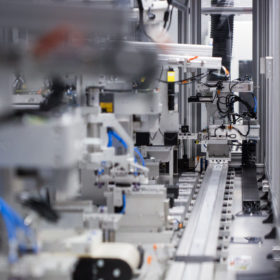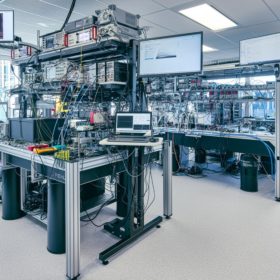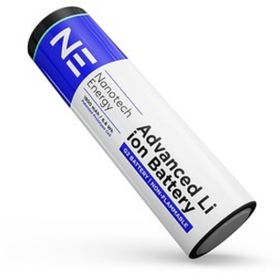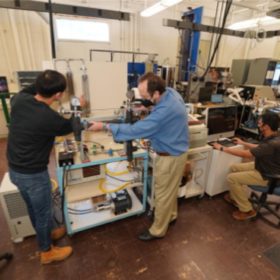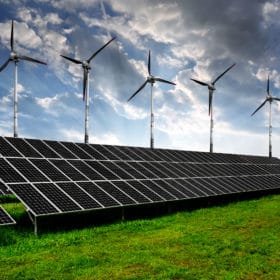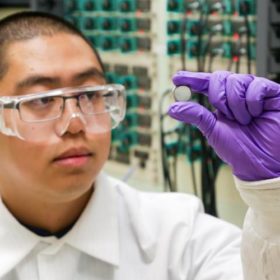Semi-solid flow battery tech promises to lower production costs by up to 40%
While still using conventional lithium-ion raw materials, 24M’s technology is said to reduce the number of steps required to manufacture battery cells and thereby the cost by up to 40%. The US company’s SemiSolid design is also said to deliver improved energy density, safety and recyclability.
The mobility rEVolution: Volkswagen taps quantum computing for battery research
Foxconn is looking to leverage its manufacturing expertise and become a major EV maker, Rolls-Royce has unveiled its first fully electric motor car, and BMW has pledged to invest $1.7 billion to build EVs in the U.S..
Non-flammable, graphene-based lithium-ion batteries approaching stationary storage market
US-based Nanotech Energy’s graphene battery uses proprietary electrodes with a thermally stable separator, and non-flammable electrolyte that is said to be inexpensive to manufacture. The technology is said to be superior in terms of safety and competitive in terms of cell performance.
Banks Group to install 2.8 GWh battery at former UK coal power station
Banks Group’s latest announcement underscores the fact that the UK battery storage market has one of the world’s fastest-growing project pipelines.
The mobility rEVolution: NASA’s cooling tech could shorten EV charging times
US researchers have unveiled a new way to speed up EV charging, while researchers in China have created a three-dimensional composite lithium anode to improve battery safety and efficiency.
Wind, solar payback times under a year in some parts of world, says Rystad
Record energy prices, particularly in Europe, are driving demand for renewables and energy storage. That is changing the equation for utility solar and wind investment and shortening project payback times to under a year in some regions. Storage deployment, driven by recent policy developments around the world, is also expected to get a big boost through to 2030.
Sodium-ion battery anode made from toxic hogweed
Russian researchers have transmuted poisonous Sosnowsky’s hogweed into high-grade anode material for sodium-ion batteries. The obtained material has a Coulombic efficiency of 87%, which is on par with the best reported results for hard carbons synthesized from other raw materials.
Off-grid solar continues to expand
The off-grid solar sector has shown resilience in the face of pandemic-related challenges, with 70 million people gaining access to electricity from early 2020 to the end of 2021. However, the ability to pay for solar energy kits has taken a hit.
The mobility rEVolution: Novel anode material paves way for 15-minute EV charging
US researchers have developed a novel fast-charging battery anode material, and GM has revealed a new focus on battery R&D. The European Parliament, meanwhile, has issued a number of proposals for alternative fuels infrastructure.
Ripple effects of EU revenue cap on renewable energy
The European Union’s much-needed emergency measures to tackle the ongoing energy crisis may have unintended consequences for the region’s renewable energy ambitions, warn analysts, but the impact on power purchase agreements will likely vary, depending on the contracts.

